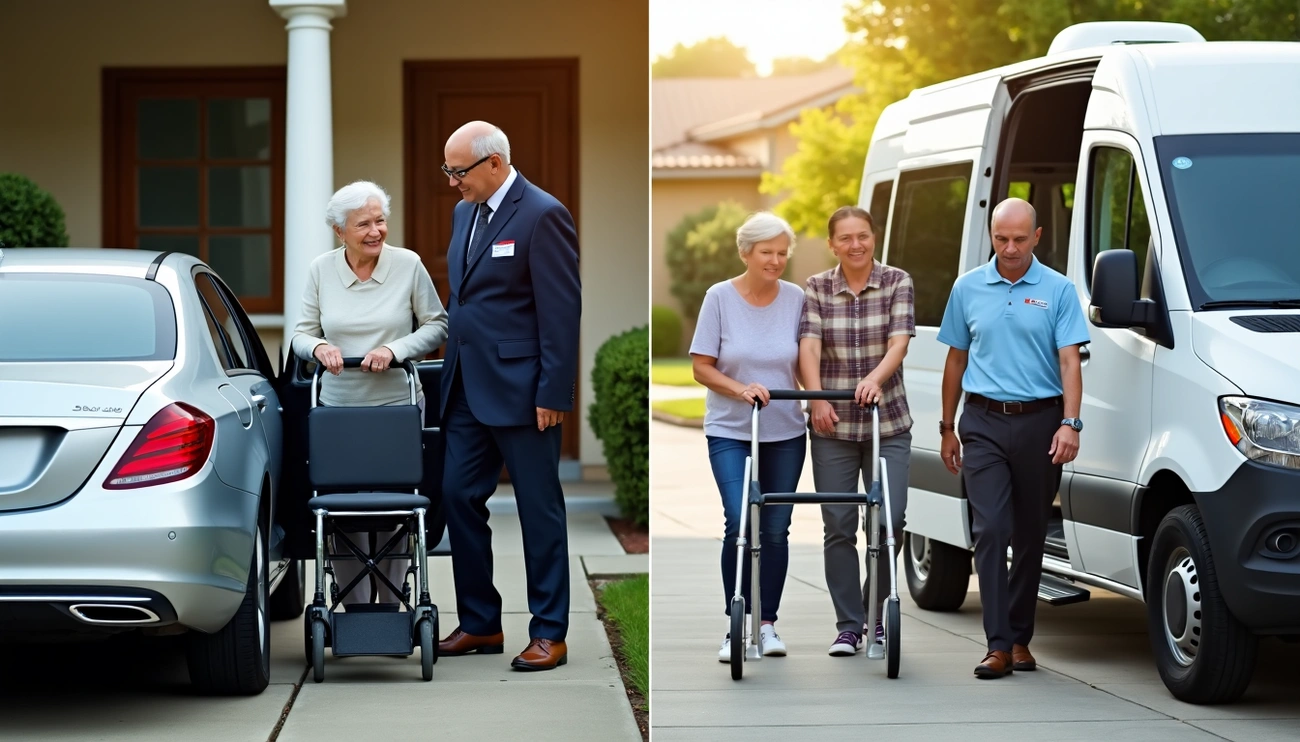As the population ages, active adult communities have become increasingly popular among seniors seeking a vibrant lifestyle in retirement. These communities offer a unique blend of independent living, social engagement, and recreational opportunities tailored to the needs and desires of adults aged 55 and older. With an emphasis on wellness and leisure, active adult communities provide a compelling alternative to traditional retirement communities.
Active adult living communities typically feature a range of amenities designed to promote physical and social well-being. These may include fitness centers, recreational facilities, and planned activities that cater to various interests. For those considering this lifestyle, it’s essential to understand the benefits and financial considerations involved. This guide will explore the key aspects of active adult communities, helping seniors make informed decisions about their retirement living options.
What Are Active Adult Communities?
Definition and Concept
Active adult communities are residential developments designed for adults aged 55 and older who value independence and an engaging lifestyle. These communities offer a unique blend of freedom, simplicity, and social connection, making them an excellent option for self-sufficient seniors. Unlike traditional senior living facilities, active adult communities put less emphasis on persistent medical support and focus more on independent living and community engagement.
These communities typically feature resort-style amenities, including fitness centers, recreational facilities, and planned activities that cater to various interests. Residents can enjoy a vibrant social life, take up new hobbies, and maintain an active lifestyle within their community. The emphasis is on creating a neighborhood-like atmosphere where seniors can form meaningful connections and combat feelings of isolation that are common among older adults living alone.
Age Requirements
Active adult communities are subject to the federal Housing for Older Persons Act, which allows them to implement age restrictions. Most of these communities are age-qualified, meaning they have specific requirements regarding who can live there. Typically, at least one member of the household must be 55 years or older to meet the “80/20 Rule.” This rule stipulates that at least 80% of the units in the community must have one occupant who is 55 years or older.
It’s important to note that not all residents need to be over 55. Some communities make exceptions for spouses or partners of residents who meet the age requirement. The minimum age for spouses can vary between communities but is often set as low as 40. Additionally, some communities may allow adult children (usually 18 or older) to reside with their parents, provided at least one resident meets the age requirement.
Types of Housing Options
Active adult communities offer a variety of housing options to suit different preferences and budgets. These may include:
- Single-family homes
- Townhouses
- Condominiums
- Apartments
- Manufactured homes
Many developers offer energy-efficient, well-designed construction with open floor plans and features that promote ease of mobility and accessibility. These homes are often built on land held in common, allowing residents to enjoy the privacy of homeownership without the burden of exterior maintenance.
Benefits of Living in an Active Adult Community
Low-Maintenance Lifestyle
Active adult communities offer a worry-free retirement experience by providing maintenance-free living. Residents can enjoy their golden years without the burden of household chores and upkeep. These communities typically offer services such as lawn care, snow removal, and home repairs. At Mosaic at West Creek, for example, homeowners receive weekly lawn maintenance, including weed control, shrub and flower bed care, and turf management throughout the year. They also benefit from annual gutter cleaning and exterior power washing services, allowing residents to focus on enjoying their retirement rather than worrying about home maintenance tasks.
Social Opportunities
One of the key advantages of living in an active adult community is the abundance of social opportunities available. These communities are designed to foster social interaction and create a sense of belonging among residents. Many offer social clubs and groups catering to various interests and hobbies, such as gardening, cooking, book clubs, and fitness classes. Community events, such as holiday parties, game nights, and movie screenings, provide additional opportunities for residents to mingle and get to know their neighbors. Some communities even have partnerships with local charities and organizations, making it easy for residents to find meaningful ways to give back to the community.
Amenities and Activities
Active adult communities provide a wide range of amenities and activities designed to keep residents engaged and active. These may include:
- Fitness centers with modern equipment and classes
- Indoor and outdoor swimming pools
- Golf courses and putting greens
- Tennis and pickleball courts
- Walking trails and scenic paths
- Clubhouses with lounges and game rooms
- Art studios and craft workshops
- Educational programs and seminars
These amenities offer opportunities for residents to stay physically active, learn new skills, and pursue their passions. Many communities also feature lifestyle directors who organize events and activities, ensuring a vibrant and engaging environment for all residents. Whether it’s joining a fitness class, participating in a cooking demonstration, or attending a wine tasting event, there’s always something to do in an active adult community.
Financial Considerations
Costs Involved
Living in an active adult community has an impact on one’s finances. The cost can vary significantly, depending on factors such as geographic location, housing type, and amenities offered. Monthly fees for independent living in these communities have a median cost of $3,100, according to A Place for Mom, a senior living referral service. However, some communities may charge as much as $3,000 or more per month. Additional expenses to consider include entry fees, deposits, and meal plans.
Entrance fees are often associated with continuing care retirement communities, which provide a spectrum of care as residents age. These fees can range from $100,000 to $2 million, depending on the services covered. It’s crucial to compare these costs with the expenses of staying in one’s current home or choosing another living arrangement.
Renting vs. Buying
When considering active adult communities, seniors face the decision of whether to rent or buy. Renting offers greater flexibility and liquidity, with less money and time spent on maintenance. However, rental costs are not tax-deductible, and renters miss out on the potential equity buildup that comes with homeownership.
Owning a home provides stability and potential tax benefits through the mortgage interest deduction, although recent tax law changes have reduced this advantage for many homeowners. Ownership also comes with risks, such as market value fluctuations and unexpected maintenance expenses.
HOA Fees
Homeowners’ Association (HOA) fees are a significant financial consideration in active adult communities. These fees cover various services and amenities, which can include lawn maintenance, amenity upkeep, and sometimes exterior building maintenance for condominiums. The cost of HOA dues varies greatly between communities, influenced by factors such as offered amenities, level of maintenance, community size, and activities provided.
It’s essential to understand what the HOA fees cover to determine their impact on one’s budget. For instance, some communities include lawn care in their dues, while others may offer more extensive services. The size of the community can also affect the fees, as larger communities may have more substantial amenities but also more residents to share the costs.
Conclusion
Active adult communities offer a compelling lifestyle choice for seniors seeking independence, social engagement, and a worry-free retirement experience. These communities have an impact on various aspects of seniors’ lives, from providing low-maintenance living arrangements to offering a wide range of amenities and activities. The blend of independent living with opportunities for social interaction and personal growth makes these communities an attractive option to consider for many retirees.
When weighing the decision to move into an active adult community, it’s crucial to take into account the financial implications, including costs, renting versus buying options, and HOA fees. While these communities can provide a fulfilling and active lifestyle, they may not be the right fit for everyone. In the end, the choice depends on individual preferences, financial situations, and long-term goals for retirement living.
FAQs
Can individuals younger than 55 reside in 55+ communities in Connecticut?
In Connecticut, 55+ communities generally restrict residency to adults. Children are seldom allowed to live in these communities permanently. If they are permitted, adult children must typically be at least 18 years old. Additional age restrictions may apply to residents’ children once they reach legal adulthood.
What is the cost of senior housing in Connecticut?
The average monthly cost of assisted living facilities in Connecticut, as reported in Genworth’s 2023 Cost of Care Survey, is approximately $4,776. However, the costs can vary significantly across the state, ranging from about $838 to $15,750 per month.
How do 55+ communities operate in the United States?
Active adult or 55+ communities in the United States usually consist of single-family homes along with various amenities such as clubhouses, swimming pools, and communal outdoor spaces. Residents are typically required to pay fees to a homeowners’ association (HOA), which are used to cover the costs of outdoor maintenance and other communal facilities.












